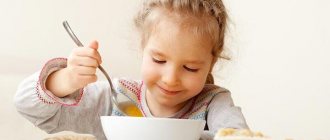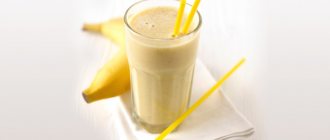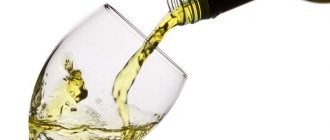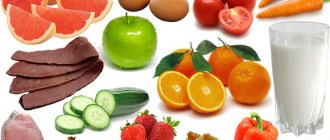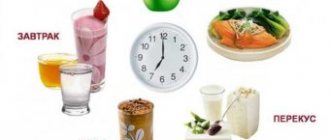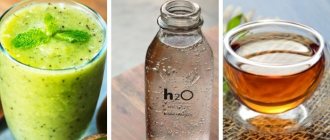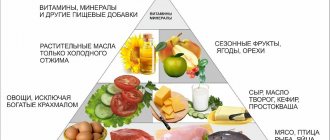General information about giardiasis
The causative agent of the disease is a protozoan flagellated microorganism. When it enters the gastrointestinal tract, the parasite feeds at the expense of the host, releasing toxins during its life processes. Colonies of Giardia, located on the inner walls of the small intestine, disrupt the peristalsis of the organ and prevent the absorption of fats and carbohydrates. They can cause mechanical tissue damage, accompanied by microbleeding.
Causes
Infection of the body with a parasite occurs in the following cases:
The causative agent of giardiasis is a protozoan flagellated microorganism.
- When eating unwashed vegetables, fruits and berries.
- Failure to comply with personal hygiene rules (washing hands after visiting the toilet or public places).
- If contaminated water enters the stomach while swimming in natural bodies of water.
- In close contact with pets.
Giardia is also carried by insects: flies, mosquitoes, cockroaches, etc. Gardeners are at risk, since soil fertilized with manure contains a large number of parasite cysts.
Symptoms
The disease has 2 forms: acute and chronic.
Each of them is accompanied by a number of symptoms. Signs of acute giardiasis are:
- frequent attacks of pain in the lower abdomen and navel area;
- increased salivation;
- rumbling, flatulence, belching;
- nausea, sometimes vomiting;
- diarrhea or, conversely, constipation;
- the presence of mucus in the stool;
- feces acquire a light brown color due to their high fat content, the digestion process of which is blocked by harmful microorganisms;
- slight loss of body weight;
- fatigue, dizziness;
- loss of appetite.
Pain in the lower abdomen, nausea, fatigue are signs of giardiasis.
The chronic form of the disease is characterized by:
- Sharp weight loss (if left untreated, malnutrition may develop).
- Lack of appetite.
- Severe headaches.
- Development of colitis, cholecystitis.
- The appearance of a dense white coating on the tongue.
- Paleness of the skin (especially on the wings of the nose).
- The appearance of jams and microcracks on the lips, peeling of the skin around the mouth.
- Neurotic states: irritability, aggressiveness, apathy.
- Insomnia.
- Pain in the heart area.
- Allergic reactions: itching, redness of the skin.
Giardiasis is not always accompanied by pathological conditions. Under the influence of the immune system, parasite cysts do not transform into a vegetative form of existence. In such cases, the person is only a potential source of infection for others.
Lactose-free diet for lamblia in adults
A doctor may prescribe a lactose-free diet, especially if dairy products cause discomfort to a person. The essence of this diet is to exclude most dairy products. You will need to eat a variety of cereals and other complex carbohydrates. Quickly digestible carbohydrates are contraindicated. You will need to give up sweets and fatty foods. A person must independently monitor what he eats and prohibit the following types of foods:
- bakery;
- chocolate;
- fruits;
- confectionery.
Excluding sweets and dairy is the main principle of a lactose-free diet.
Giardia feeds on fast carbohydrates, so first of all you need to limit the intake of these organic substances. If a person strictly follows the rules of the diet, the parasites will begin to die or at least cause less harm to the body.
What not to eat with giardiasis
There are a number of foods that should never be consumed if you have giardiasis. They will provoke the development of the disease and also affect the overall well-being of a person. First of all, you will need to eliminate alcoholic beverages. In addition, the following foods should not be consumed:
- white, rye and black bread;
- pasta and spaghetti;
- almost all types of juices;
- milk;
- sausages;
- gluten porridges;
- spicy additives.
Food must be prepared correctly. A diet for Giardia must include only food that is prepared without the use of spices. You should also avoid fried, salty, fatty and smoked foods.
The number of prohibited products depends on the degree of Giardia infestation. The more severe the disease, the stricter the diet should be. An adult must limit himself for several months in order to get a good result in the treatment of parasitic pathology.
What can you eat if you are diagnosed with giardiasis?
A huge number of people are concerned about the question of what to eat when treating giardiasis. The diet may include products from the following list:
- lean meat cooked without seasoning;
- fish;
- dairy products;
- carrots and cabbage;
- buckwheat, oatmeal and rice cooked in water.
The basis of the diet is buckwheat, rice and oatmeal. They can be combined with lean meat and fish. It is advisable to abandon three meals a day in favor of four or five meals a day. Fractional meals will improve the functioning of the digestive system, which often suffers when affected by Giardia.
Buckwheat porridge is the preferred dish when Giardia is detected
To increase the amount of protein in your diet, you can eat chicken eggs. They can be added after achieving the first results in the treatment of pathology. It is impossible to fully recover unless you eat enough protein, fat and carbohydrates every day.
Among the permitted fermented milk products are kefir and cottage cheese. During the day you can drink drinks made from sour berries. Fruit juice or compote prepared without sugar can be used as a source of vitamins. If there is a severe deficiency of micro- and macroelements, the doctor can prescribe specialized supplements. They will need to be taken for a limited period. As a rule, the use of restoratives begins immediately after the destruction of most of the parasites.
Features of treating disease with diets
The purpose of dietary nutrition is to supply the body with vitamins, minerals and other useful substances that are missing as a result of a malfunction of the gastrointestinal tract, as well as to create the necessary microflora for the death of parasites in the intestines.
Foods that are sources of fast carbohydrates are excluded from the diet. Dishes are prepared by boiling or baking foods. The number of meals should be increased to 5-6 times a day.
Advantages
In the early stages of the disease, diet will help cope with parasites without the use of drugs.
In addition, taking a large number of medications causes mass death of helminths, which leads to poisoning by their decay products. Dietary nutrition helps to gradually destroy Giardia without causing an acute reaction in the body. The diet does not include the consumption of expensive foods, since the main sources of nutrition are cereals, fruits and vegetables.
Cereals and vegetables are the most important part of the diet for giardiasis.
General rules
Giardiasis belongs to a group of parasitic infestations, which is caused by a single-celled parasite, Giardia, which primarily affects the small intestine and is often accompanied by neurological and allergic symptoms.
Giardia has a variety of negative effects on the host's body. Vegetative forms of the parasite, fixing on the surface of enterocytes , consume ready-made nutrients, cause mechanical and toxic damage to the intestinal mucosa, thereby disrupting its absorption function and trigger a number of pathological processes: impaired enzyme , the formation abdominal syndrome , impaired liver function, sensitization of the human body with products decay and vital activity of Giardia, the formation of allergic dermatitis , decreased synthesis of immunoglobulins , development dysbiosis .
The disease is characterized by a polymorphism of clinical signs from giardiasis, which occurs without clinical manifestations, to manifest diseases in various forms - intestinal, biliary-pancreatic, mixed. Thus, with Giardia in adults and children with various forms of the disease, only abdominal syndrome can manifest itself as diarrhea , abdominal pain, nausea and anorexia , constipation , intestinal dysbiosis , lactase deficiency.
Treatment of giardiasis, along with specific drug treatment, involves the appointment of special therapeutic nutrition. The diet for giardiasis is aimed at creating unfavorable conditions for the life and reproduction of parasites, reducing inflammation of the intestinal mucosa and irritation of the gastrointestinal tract, regulating stool and correcting intestinal microflora.
The basic principles of dietary nutrition for giardiasis are:
- maximum exclusion from the diet of foods rich in simple carbohydrates, since their carbon-water-saturated environment is favorable for the life and reproduction of parasites;
- introducing into the diet foods that create an acidic environment, which is extremely unfavorable for Giardia;
- consumption of products and food that do not irritate the mucous membranes of the gastrointestinal tract already damaged by Giardia;
- inclusion in the diet of a large number of foods containing fiber (unsweetened fruits, vegetables);
- limiting fat intake;
- protein content at the rate of 0.7-1 g per kilogram of body weight;
- limiting the consumption of whole milk in the diet, as well as dairy products with fillers;
- exclusion of the frying process from the methods of culinary processing of products;
- fractional diet (5-6 times a day);
- drinking regime at the level of 1.5-2 l/day of free liquid, it is desirable to include sour jelly and fruit drinks in the diet.
Table No. 4 can be taken as the basis for therapeutic nutrition , the indications for which are intestinal diseases ( enteritis and enterocolitis , diarrhea of any etiology). The main task of Table 4 is to limit the content of carbohydrates and fats in the diet. In case of giardiasis, a modification of this table is prescribed to increase the content of protein and fiber in the diet.
The basis of the diet consists of low-fat meat/vegetable broths, decoctions of buckwheat and rice, lean meats (veal, skinless chicken, turkey, rabbit). The diet should include foods rich in dietary fiber, which act as nutritional sorbents - bran, vegetables (except potatoes) in any form (stewed, steamed, boiled), viscous porridge, baked apples, pears, cereals, dried fruits, grain bread. It is recommended to consume foods that form an acidic environment - taking natural juice from acidic vegetables/fruits (tomatoes, pomegranates, oranges, lingonberry juice, cranberries). In between meals, it is recommended to snack on fresh sour fruits and berries.
Products containing easily digestible carbohydrates - sugar and products containing it, jam, honey, jam, sweets, confectionery - are excluded from the diet. It is not allowed to consume foods with a long digestion period - fatty meats, canned meat and fish, flour and bakery products, whole milk and sour cream, potatoes, pasta, and products that irritate the gastrointestinal mucosa - various seasonings, hot peppers, garlic, coffee, carbonated and alcoholic beverages, products with dyes and preservatives, sugar substitutes.
During the restoration of digestive function after complete eradication of Giardia from the intestines, dietary nutrition is adjusted depending on the degree of disturbance of digestion, absorption and the individual characteristics of the body. Conditions of disturbed intestinal biocenosis, which occurs in every second patient, require special nutritional correction. In such cases, the diet should be enriched with low-fat fermented milk products without foreign additives, and also take bifido / lactobacillus . In case of giardiasis, which occurs with clinical symptoms of allergic dermatitis , urticaria the patient is prescribed a hypoallergenic diet.
Basic principles of nutrition
The principles of nutrition for patients with giardiasis are based on creating unfavorable conditions for the life of helminths. It is necessary to adjust the usual diet taking into account the following requirements:
- Limit your intake of carbohydrates that are quickly absorbed by the body.
- Increase the acidity level in the stomach.
- Prepare dishes by boiling or baking foods.
- Eliminate dairy products from the menu.
Children
Parents of sick children need to ensure that all products included in the recommended list are present in the weekly menu.
It is necessary to diversify the child’s diet as much as possible so that the body is saturated with nutrients (vitamins, minerals) in sufficient quantities.
Adults
Adults should adhere to the general principles of nutrition for giardiasis.
What is giardiasis?
Giardiasis is a parasite that arises in the small and large intestine with the goal of destroying the human intestine. The symptoms of their presence are so invisible that a person may not even realize what kind of “value” he carries within himself. Alas, more than 35% of the population is infected with this.
With proper nutrition, giardiasis can “leave” the human body along with the feces. But first, let's look at the causes of this disease and the main symptoms.
How I lost half my weight in six months
Causes and symptoms
The causes of giardiasis in children and adults may be the following factors:
popular:
- ✅ Strange but effective weight loss methods used by celebrities
- ✅ Effective Biocomplex formula helps get rid of food addiction
- ✅ Minus 24 kg without leaving home! A Muscovite who lost weight in quarantine “blew up” Russia with her recipe
- drinking stale, poorly purified water;
- eating “wrong foods”;
- low stomach acidity;
- Products that are not thoroughly washed before consumption.
Also, the above disease can “settle” in your body after contact with a person or animal with giardiasis.
Symptoms that urgently require adherence to a diet for giardiasis are as follows:
- flatulence;
- diarrhea;
- rumbling and pain in the abdomen.
At an increased stage of the disease , symptoms as:
- frequent headaches;
- causeless increase in body temperature;
- feeling of weakness;
- decreased performance;
- insomnia;
- constant grinding of teeth.
In addition, giardiasis that is not treated in time with a special diet leads to severe weight loss, anemia and a weakened immune system.
An innovative drug for losing weight by 30-40 kg! Removes even age-related fat without chemicals, liposuction, diets or exercise. Exercises
As mentioned above, the main method of treating Giardia in adults and children is proper nutrition. Let's consider what the essence of such a diet is and what its basic nutritional principles are in the paragraph below.
Types of diets
Nutritionists have developed dozens of different diets that help cope with the disease. But the most effective are the Mediterranean diet and the Pevzner diet plan.
Mediterranean
The traditional Mediterranean diet includes the following foods:
- vegetables, fruits, herbs and berries;
- olive oil;
- cereals;
- legumes;
- lean meat and fish;
- seafood.
Seafood is a component of the Mediterranean diet for giardiasis.
The main beneficial components are vegetable protein and fiber, which saturate the body with vitamins and microelements. Reduced consumption of fats, which are the main source of nutrition for parasites, provides an unfavorable environment for the development and reproduction of helminths.
Read also:
Mediterranean diet: features and benefits, rules
280 — Rating: no ratings
The Mediterranean diet is a balanced and healthy diet that has no contraindications and is not harmful to health. The technique is a collection of nutritional principles...
According to Pevzner
In adults, Giardia can parasitize not only in the small intestine, but also in the bile ducts.
Therefore, patients with this diagnosis are prescribed the Pevzner diet, which was originally developed for people with severe damage to the liver and pancreas. According to the Pevzner diet, patients are recommended the following BZHU ratio: 100:80:400. Products are consumed boiled, stewed, baked. The food is finely ground and the dishes are served slightly cooled. You need to eat 5 times a day.
Menu (Power Mode)
The menu and diet for giardiasis can vary significantly depending on the form of the disease. So, with the intestinal form of giardiasis, permitted products are included in the menu, according to the modified Table No. 4 according to Pevzner.
In case of severe allergic reactions due to giardiasis, the menu includes products with low hypoallergenic activity.
In the hepatobiliary form of giardiasis with the development of cholecystitis Diet No. 5 or its variations are prescribed Recipes for preparing dishes for giardiasis are standard, and the cooking technology does not require any special restrictions, with the exception of the frying process.
Allowed foods
A gentle diet for patients with giardiasis involves consuming the following food groups:
- Fruits: tangerines, lemons, oranges, apples, pineapples, grapefruits, pomegranates.
- Mushrooms: chanterelles (can be dried).
- Greens and vegetables: radishes, broccoli, peas, beans, onions, beets, cauliflower, pumpkin, spinach, tomatoes, radishes, garlic, sorrel.
- Fermented milk products: yogurt, kefir, yogurt, low-fat cottage cheese and sour cream, fermented baked milk.
- Meat: rabbit, chicken, turkey, veal.
- Cereals: buckwheat, oatmeal, pearl barley, millet.
- Fish: pike, cod, pike perch.
- Seafood.
- Oils: olive, linseed, butter.
- Natural honey.
- Drinks: green tea, mineral water, compotes and fruit drinks from fresh berries, beet and carrot juices, jelly.
- Berries: cranberries, black and red currants, viburnum, cherries, lingonberries.
- Pickles, such as sauerkraut.
- Nuts (almonds).
- Chicken eggs.
Prohibited for use
Patients with giardiasis will have to partially limit or completely exclude from the diet (depending on the degree of pathology) a number of products:
- Vegetable preparations: canned tomatoes and cucumbers.
- Fruits: apricots, bananas, pears, melon, figs, watermelon, avocados, plums.
- Fresh berries: strawberries and grapes.
- Dried fruits: apricots, dates, dried apricots.
- Cereals: wheat and rice.
- Jam, jam, jelly.
- Chocolate.
- Store-bought sauces and seasonings: mayonnaise, ketchup, mustard, horseradish, adjika.
- Dairy products: milk, cream.
- Meat: pork, lamb.
- Smoked products: ham, sausage.
- Fatty fish, as well as canned food, caviar.
- Pork fat.
- Carbonated drinks.
- Black tea, coffee.
- Alcohol.
Approximate weekly menu
Some people find it difficult to adjust their usual diet taking into account all the dietary requirements, so doctors advise using an approximate weekly menu.
Monday
| 1st breakfast | Oatmeal with water, green tea |
| 2nd breakfast | Carrot and apple salad |
| Dinner | Bean soup, boiled chicken, mashed potatoes, orange compote |
| Afternoon snack | Low-fat cottage cheese, green tea with lemon |
| Dinner | Boiled fish, fresh tomato salad with olive oil |
Tuesday
| 1st breakfast | Low-fat yogurt, apple, tea |
| 2nd breakfast | Orange or grapefruit |
| Dinner | Millet porridge, baked veal, beet salad, cranberry juice |
| Afternoon snack | Kefir, bran bread |
| Dinner | Roast turkey, carrot salad |
Wednesday
| 1st breakfast | Oatmeal porridge with honey, green tea |
| 2nd breakfast | Tomato juice |
| Dinner | Pea soup, stewed beef with vegetables, lingonberry jelly |
| Afternoon snack | Ryazhenka |
| Dinner | Baked fish with cheese, cauliflower salad |
Thursday
| 1st breakfast | Semolina porridge, green tea |
| 2nd breakfast | Low-fat cottage cheese, pomegranate |
| Dinner | Sauerkraut cabbage soup, stewed rabbit meat, buckwheat porridge, apple compote |
| Afternoon snack | Tomato and cucumber salad with low-fat sour cream, rosehip infusion |
| Dinner | Boiled shrimp or squid, kefir |
Friday
| 1st breakfast | Bran bread, boiled egg, green tea |
| 2nd breakfast | Grapefruit or pineapple, cranberry juice |
| Dinner | Mushroom soup, boiled chicken meat, vegetable stew, carrot juice |
| Afternoon snack | Cottage cheese casserole with fresh berries |
| Dinner | Boiled fish, green pea and boiled potato salad with olive oil |
Saturday
| 1st breakfast | Buckwheat porridge, rosehip decoction |
| 2nd breakfast | Low-fat yogurt, orange |
| Dinner | Stewed beef, mashed potatoes, tomato salad, jelly |
| Afternoon snack | Kefir, apple |
| Dinner | Boiled fish, radish salad with low-fat sour cream |
Sunday
| 1st breakfast | Low-fat cottage cheese, tea with lemon |
| 2nd breakfast | Kiwi |
| Dinner | Sorrel and spinach cabbage soup, boiled pork, pearl barley porridge, tomato salad with olive oil, cherry or currant compote |
| Afternoon snack | Boiled shrimp, tomato juice |
| Dinner | Steamed fish cutlets, mashed potatoes, vinaigrette, kefir |
Treatment menu for 7 days
The diet menu for giardiasis in children and adults depends on the form of the disease:
- If the protozoa exclusively affects the intestines, follow table No. 4.
- In case of toxic-allergic syndrome, they are limited to products with a low degree of allergenicity.
- If giardiasis is complicated by cholecystitis, follow diet No. 5 according to Pevzner.
The menu for the week is made up of permitted and partially restricted products. They are subjected to almost all types of heat treatment, except frying.
Monday
Patients with giardiasis need to eat often, but in small portions. The menu for the first day of the diet looks something like this:
- first breakfast - oatmeal in water with a small amount of butter, rosehip decoction;
- second breakfast – low-fat cottage cheese, fruit drink;
- lunch - vegetable soup, steamed cutlets, sliced vegetables, jelly;
- afternoon snack – oatmeal cookies, compote;
- dinner - zucchini stew, boiled chicken fillet, yogurt.
To reduce the load on the intestines, eat dinner at least 1.5 hours before bedtime.
Tuesday
The nutrition program for giardiasis is based on the consumption of cereal porridges. They are boiled in milk diluted with water in a 1:1 ratio. The diet menu for Tuesday may consist of the following dishes:
- first breakfast – buckwheat with milk, biscuits, juice;
- second breakfast – cottage cheese casserole, berry juice;
- lunch - beetroot soup, boiled turkey, oatmeal bread, compote;
- afternoon snack – baked apple, chamomile infusion;
- dinner - vegetable stew, baked pike perch, herbal tea.
The diet for giardiasis is variable. To avoid hypovitaminosis, it is advisable to change dishes and food combinations more often.
Wednesday
In the middle of the week, it is recommended to have breakfast with unsweetened fruits and berries - grapefruit, unsweetened apple, pineapple. Baked apple mousse is suitable as a second breakfast. For lunch they eat vegetable soup, steamed cutlets and vegetable juice. In the afternoon, they limit themselves to eating jelly with oatmeal cookies. For dinner they prepare stuffed peppers with mashed potatoes.
Thursday
For the diet, dishes with the maximum range of products are selected. They focus on vegetables with fiber, which stimulates intestinal function. The diet menu for Thursday looks like this:
- first breakfast – oatmeal with water, cranberry juice;
- second breakfast – 1 grapefruit;
- lunch - lean soup, vegetable stew, boiled veal, compote;
- afternoon snack – low-fat kefir or yogurt, biscuits;
- dinner – steamed beef cutlets with baked carrots, vegetable salad, green tea.
Failure to follow a diet for giardiasis is fraught with deterioration in health and the spread of a parasitic infection.
Friday
A balanced diet replenishes the deficiency of microelements and vitamins in the body. To combat giardiasis, the following products and dishes are introduced into the menu:
- first breakfast - boiled eggs, vegetable juice;
- second breakfast – cottage cheese soufflé, compote;
- lunch – cream soup with broccoli, meatballs with brown rice, sliced vegetables, compote;
- afternoon snack – vinaigrette without beans, green tea;
- dinner - vegetable broth, cabbage rolls with minced chicken, kefir.
If the intestinal mucosa is irritated, drink a glass of low-fat yogurt without filler 30 minutes before bedtime.
Saturday
The diet is designed for the rapid elimination of protozoan waste products. To alleviate the condition of giardiasis, use:
- first breakfast – low-fat cottage cheese, crackers, compote;
- second breakfast – 1 grapefruit, tea;
- lunch – soup with meatballs, vinaigrette, herbal tea;
- afternoon snack – muffins with apples, beet juice;
- dinner – stewed zucchini with tomatoes, fish cutlets, low-fat kefir.
With giardiasis, it is undesirable to season salads with spicy seasonings, as they irritate the gastrointestinal tract.
Sunday
When symptoms subside, familiar foods are gradually introduced into the diet. But in order to avoid relapses of giardiasis, they completely abandon conservation.
Diet menu for the day:
- first breakfast – corn porridge, currant juice;
- second breakfast – baked apple or grapefruit;
- lunch – cream soup with broccoli, steamed veal, fresh vegetables, tea;
- afternoon snack – biscuits with yoghurt;
- dinner - fish stew, vegetable stew, chamomile infusion.
If giardiasis is complicated by diarrhea, salted meat and vegetable broths are introduced into the diet.
Useful recipes for therapeutic and preventive diet
Do not despair if, according to diet requirements, you have to exclude your favorite dishes from the menu. The list of foods allowed for consumption is extensive, so you can experiment with the ingredients and method of preparation.
First meal
The first course must be on the lunch menu.
During treatment, it is better for patients with giardiasis to give preference to vegetable soups. To prepare dietary cabbage soup you will need the following products:
- tomatoes - 2 pcs.;
- onions - 3 pcs.;
- bell pepper - 1 pc.;
- carrots - 1 pc.;
- cabbage - 0.5 heads;
- dill and celery greens - to taste;
- bay leaf, pepper, salt.
Preparation:
- Place a pot of water on the fire.
- Finely chop the cabbage.
- Peel carrots, peppers, onions.
- Cut all vegetables into cubes.
- Place cabbage and carrots in boiling water and cook for 7 minutes.
- Add tomatoes, peppers and onions.
- Cook until vegetables are soft.
- Sprinkle the finished dish with herbs.
Nutritionists advise eating sauerkraut once a week to increase acidity in the body.
Dietary cabbage soup (vegetable) for giardiasis.
Making cabbage soup from sauerkraut is quick and easy:
- Pour 2 liters of water into a saucepan and place on the stove.
- Cut the onion (1 pc.) into half rings, grate the carrots (1 pc.) coarsely.
- Pour 2 tbsp into the pan. olive oil, add carrots and onions, add sauerkraut (250 g).
- Cover the pan with a lid and simmer the vegetables over low heat for 10 minutes.
- Peeled, washed and cut into strips potatoes (3 pcs.) Place in boiling water.
- After 5 minutes, add the contents of the pan to the pan.
- Salt and pepper the cabbage soup and boil for another 10 minutes. Before serving, garnish with herbs.
Second
From permitted products you can prepare delicious chicken fillet baked in foil. For the dish you will need the following ingredients:
- chicken fillet - 2 pcs.;
- tomatoes - 2 pcs.;
- low-fat sour cream - 2 tbsp;
- garlic - 1 clove;
- seasonings and salt - to taste.
Baked breast fillet with tomatoes and sour cream is a delicious dish for giardiasis.
Preparation:
- Make several shallow cuts on the surface of the fillet.
- In a deep bowl, mix sour cream and garlic passed through a press.
- Salt and pepper the meat and brush with sour cream mixture on all sides. Make sure that the mixture flows into the cuts.
- Leave the fillet for 15-20 minutes to soak.
- Place tomatoes cut into half rings on the surface of the fillet.
- Wrap the pieces of meat in foil, place on a dry baking sheet and put in the oven for half an hour.
You can cook turkey and beef in the same way.
Salads
Salads made from fresh or boiled vegetables seasoned with olive oil are suitable for dietary nutrition. For example, take an arbitrary amount of cabbage, carrots and apples. Finely chop all the ingredients, mix, sprinkle lemon juice on top and pour over linseed or olive oil.
Another recipe for a juicy and nutritious salad: squid carcass, pink radishes, boiled eggs, cut a green apple into cubes and season with olive oil. The proportions of the components are arbitrary.
Beverages
You can prepare fruit drinks, compotes and jelly from any fresh berries.
Smoothies with fruit additives have become especially popular. To prepare the drink you will need:
- kefir - 1 tbsp.;
- apples - 2 pcs.;
- cinnamon;
- honey;
- mint.
Grind the apples in a blender, pour kefir into the puree, add honey, cinnamon and a sprig of mint (optional). Beat everything again until foam forms.
Apple smoothie is a healthy drink for giardiasis.
Dessert
Dietary nutrition does not exclude the consumption of desserts.
Treats are prepared only from natural products, and sugar in recipes should be replaced with honey. You can, for example, use a frozen yogurt recipe. For the dish you will need:
- low-fat fermented milk product - 1 l;
- any fresh berries or fruits - to taste;
- honey - 2 tbsp;
- vanillin.
Mix all ingredients, beat, pour into molds and place in the freezer for 2-3 hours.
Dietary oatmeal cookies are made from rolled oatmeal and low-fat cottage cheese, which fully replaces flour and holds together the dough components. In addition to the main products, an egg and puree of berries and fruits are added to the preparation. Next, you need to sweeten the dough with honey, knead well, form cookies and bake in the oven.
What not to eat: prohibited and partially restricted foods
Nutrition for giardiasis should be gentle. Semi-finished products, rich meat broths, and pickled vegetables are excluded from the menu. Many patients are interested in whether it is possible to eat eggs with giardiasis. The list of healthy products includes only chicken eggs. It is undesirable to consume more than 2 eggs per day, as they cause constipation.
It is recommended to replace sweet drinks with fruit drinks, compotes or juices from sour vegetables and fruits. Easily digestible carbohydrates are not allowed on the menu - yeast dough, confectionery, honey and sugar. If you follow the menu rules, the amount of Giardia in the intestines decreases, which leads to recovery.
Prohibited foods for giardiasis
| Product groups | Product examples |
| fruits | plums, figs, bananas, apricots, melon, sweet pear, plums |
| mushrooms | champignons, honey mushrooms, oyster mushrooms |
| vegetables and herbs | canned and pickled tomatoes, pickled cucumbers |
| dairy products | whole milk, heavy cream |
| meat products | goose, pork, smoked chicken and sausages, duck |
| porridge and cereals | White rice |
| Fish and seafood | black caviar, dried fish, canned fish |
| gas stations | mayonnaise, ketchup |
| beverages | black tea, sweet soda, coffee, sweet fruit juices, kvass, alcoholic drinks |
For giardiasis, it is advisable to replace sugar with sorbitol and bread with biscuits.
Eating foods in small portions improves digestion and reduces the load on the injured intestines. The only fresh juice recommended is lemon juice. But if giardiasis is complicated by enteritis, colitis or gastritis, it is used with caution and only as prescribed by a gastroenterologist.
As part of the diet, products with dyes, flavors and preservatives are excluded from the menu. During treatment for giardiasis, smoked meat is abandoned in favor of boiled veal, chicken and rabbit.
Results and reviews
Marina, 24 years old, Yekaterinburg At the age of 22, I was diagnosed with giardiasis.
During this period, I studied at the university and lived in a dormitory. There I became infected with protozoa. The doctor prescribed several types of drugs. But after a week of taking it, I felt very tired and constantly dizzy. I decided to change my diet and used the Pevzner diet. After just 2 days, my health improved, and after another 10 days, tests showed the absence of parasites. In addition, proper nutrition helped me lose an extra 5 kg. Ekaterina, 31 years old, Samara My son suffered from giardiasis 3 times. In all cases, the disease was quickly managed with the help of medications and diet. I believe that without adjusting the diet, the treatment would have been longer.
diets for giardiasis
Blood tests
This is the largest group of studies that are carried out in laboratories. And the most frequently prescribed tests. Of course, there is no point in describing them all, but it is useful to know the norms of the most common blood parameters.
Advice:
sometimes it happens that some indicator in the analysis, completely unexpectedly for you, turns out to be abnormal. Of course, this causes excitement, sometimes it unsettles us very much. So: the first thing you need to do is calm down, and the second thing is to get tested again and preferably in a different laboratory. Anything can happen: people work in the laboratory, and the reagents may be of poor quality, and you could also violate the rules for taking tests. Moreover, sometimes it happens that the analysis requires certain preparation (take it on an empty stomach, do not eat any foods, etc.), but you were not warned about it or not told everything, assuming that you already know. Or maybe the cold affected the biochemistry parameters and in a week they will return to normal. Therefore, it is imperative to do a control test. And then go to the doctor.
One more thing should be said. Nowadays, almost everywhere in all branches of science and technology, including medicine, in accordance with the State Standard, the use of the International System of Units (SI) is mandatory.
The SI unit of volume is the cubic meter (m3). For convenience, in medicine it is allowed to use the unit of volume liter (l; 1 l = 0.001 m3).
The unit of quantity of a substance is the mole. A mole is the amount of a substance in grams, the number of which is equal to the molecular mass of that substance. The content of most substances in the blood is expressed in millimoles per liter (mmol/l).
Only for indicators whose molecular weight is unknown or cannot be measured because it has no physical meaning (total protein, total lipids, etc.), mass concentration is used as a unit of measurement: grams per liter (g/l).
In the recent past, a more common unit of measurement was the milligram percent (mg%) - the amount of a substance in milligrams contained in 100 ml of biological fluid. To convert this value into SI units, use the following formula: mmol/l = mg% × 10 / molecular weight of the substance.
The previously used concentration unit equivalent per liter (eq/L) is replaced by the unit mole per liter (mol/L). To do this, the concentration value in equivalents per liter is divided by the valency of the element.
Sometimes, in some laboratories, these units of measurement are still used.
Enzyme activity in SI units is expressed in the number of moles of product (substrate) formed (converted) in 1 second in 1 liter of solution: mol/(s-l), µmol/(s-l), nmol/(s-l).
In the most general form, blood tests are divided into clinical and biochemical.
Clinical blood test
- an analysis that allows you to evaluate the hemoglobin content in the red blood system, the number of red blood cells, the color index, the number of leukocytes and platelets. It also includes the leukocyte formula and erythrocyte sedimentation rate (ESR).
With its help, you can identify anemia, inflammatory processes, the condition of the vascular wall and many other diseases.
Blood chemistry
is a laboratory research method that is used in all areas of medicine and reflects the functional state of various organs and systems.
A biochemical blood test usually includes the determination of the following indicators: serum amylase, total protein, bilirubin, iron, potassium, calcium, sodium, creatinine, CPK (creatine phosphokinase), LDH, (lactate dehydrogenase), lipase, magnesium, uric acid, sodium, cholesterol, triglycerides , liver transaminases, phosphorus, etc. This allows you to evaluate metabolism and the functioning of internal organs.


